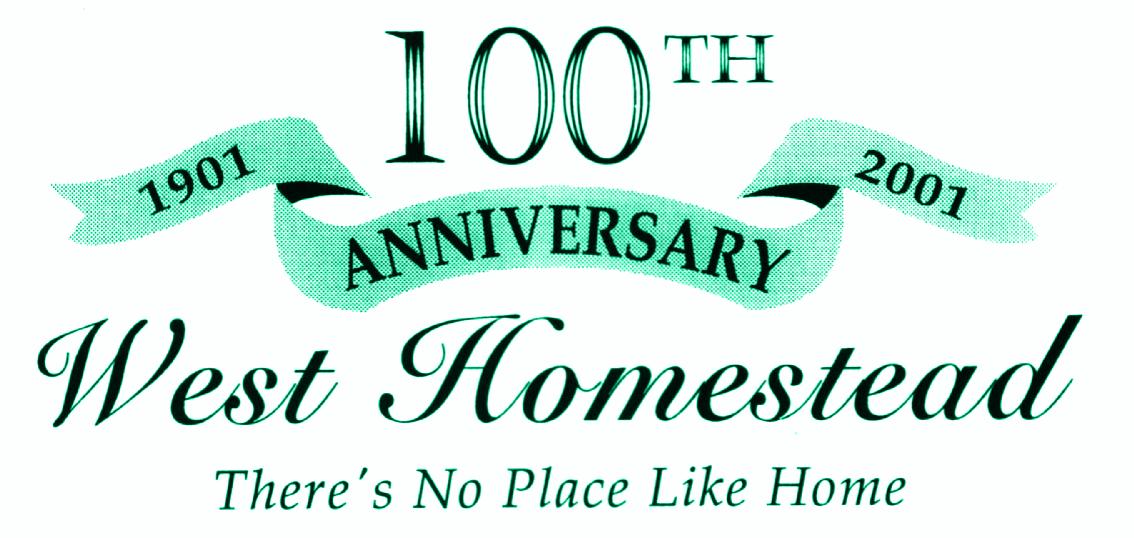
In the picturesque valley of the Monongahela River, just six miles from the "Golden Triangle" of Pittsburgh, is situated the borough of West Homestead. It is not very large, but what it lacks in size is made up in its industries and wealth, for today it is one of the richest boroughs in the state of Pennsylvania. Let us look back over the history of this thriving, industrious community. The first inhabitants of this region were the Tallegewi, an Indian tribe. Our knowledge of them is very vague, but we do know the that they were conquered by the Delawares who came from the West. Before the advent of the white man, savage warfare had wrested the supremacy from them and bestowed it upon the indomitable Iroquois, who laid claim to all of Western Pennsylvania.
The French claimed by right of discovery all the lands drained by the Mississippi and its tributaries. They fixed the limits of their possessions at the summit of the Allegheny Mountains. The English claimed the same region, and in 1607 gave it to a group of settlers to make the colony of Virginia.
On March 4, 1681, it was included in the charter which the English king granted to William Penn.
The French and Indian War settled the question of ownership of this region in favor of the English.
By 1754 a few white settlers had built cabins west of the Allegheny Mountains. More and more kept coming, and the Indians resented this.
Indian attacks were common along the frontier and the fighting was severe, yet the settlers continued to take up lands west of the mountains. The Indians complained of the encroachment to the English king, and to the govenors of Pennsylvania and Virginia. on October 7, 1763, King George forbade any settlements west of the Alleghenies. Two years later, 1765, King George again warned John Penn, Lieutenant Governor of Pennsylvania, to allow no new settlers in this part of the state, and to see that those who were here were evacuated immediately. At that time Western Pennsylvania was claimed by both Pennsylvania and Virginia, but our General Assembly and the Governor of Virginia agreed that the land west of the mountains belonged to the Indians.
But the white men continued to come. Those already settled in this region refused to relinquish their lands and leave them in possession of the natives whom they hated, and from whom they had suffered much. Under these circumstances but one course could be persued; the title to the country must be purchased from the Indians. Accordingly, on the 24th day of October, 1768, a council was held with the Iroquois at Fort Stanwix, now Rome, New York. A treaty was made November 5, 1768, and the Indians agreed to give up their title of Western Pennsylvania. This was the last treaty which Pennsylvania had with the natives. The last extensive acquisition was long known as the "New Purchase," and at that time it was all included in Westmoreland Country. The was was now clear for the march of civilization to the Allegheny and the Ohio Valleys.
The title thus being acquired, measures were immediately taken to prepare the newly purchased lands for sale. On April 3, 1769, the lands in the New Purchase were sold at five pounds sterling per hundred acres. This was equivalent to about 25 dollars.
A few years later a petition was presented to the Assembly of Pennsylvania asking for the erection of a new county out of the territory around the head of the ohio, the principle reasons being the increase in population, and the difficulty of having to travel so far in quest of justice. The county seat then was in Greensburg, Pennsylvania. The petition was favorably received, and an act was passed September24, 1788, erecting the county of Allegheny, but a much larger Allegheny than the one with which the readers of this history are familiar. The name "Allegheny" was derived from a tribe of Indians called the Alleghans, which occupied the land along the Allegheny River in ancient times.
The division of the county into townships for the better governing of the increasing population was a matter of the first importance, and early engaged the attention of the court. On the 18th of December, 1788, the court divided Allegheny County into the following townships: Moon, St. Clair, Mifflin, Elizabeth, Versailles, Plum, and Pitt. For the purpose of this history we shall deal with the Mifflin Township, because in the early days the region now known as West Homesteadwas a part of that township. It was named for Thomas Mifflin, Governor of Pennsylvania at the time of its formation.
Very little is known about the court records in this vicinity. According to the court records John Travis owned a large tract of land where West homestead is now, and had it surveyed July 10, 1769. He deeded it to Richard Butler and William Butler December 4, 1773. Richard Butler released his right to William Butler by a patent dated January 25, 1788. The consideration was 36 pounds, five shillings, six pence or about $175. This Butler tract was called "Southerland," and it extended from the Monongahela River to Doyle Avenue, and from a line west of Streets Run to Victor Alley. William Butler had been a colonel in command of the Fourth Pennsylvania Regiment of the American Army during the Revolutionary War.
One of the early settlers in Mifflin Township was David Calhoun, a man of Scotch-Irish ancestry, who came from Lancaster, Pa. When he was 18 years of age, David enlisted in the Continental Army. He saw continuous service throughout the Revolutionary War; he was wounded in the Battle of Brandywine, but reenlisted, and finally saw Cornwallis deliver up his sword after the siege of Yorktown.
After the war David and a certain John Shearer, of whom nothing further is known, applied for a government land grant. Those grants were issued to Revolutionary Soldiers upon payment by the soldiers of one dollar per acre of soft land.
In 1789 such a grant was issued on sheepskin by the newly constituted government of the United States, and it was known as the Calhoun-Shearer Patent.
The Calhoun heirs have no definite knowledge of the original acreage, but this considerably more extensive than that later annexed to the borough.
The first house on the Calhoun Estate was a log cabin, located somewhere on the site of the present New Homestead; it was built by David Calhoun.
The second house, also built by David, was a stone inn or "hostelry" located somewhere along the present West Run Road. This was known as the "Hunters' Rest." Its location was along the first road constructed between Pittsburgh and the boat-building town of Elizabeth, Pennsylvania. It became the established overnight stop between the two towns.
David's son, David K. Calhoun, built the third house. It was made of stone, and was still standing when the United States Housing Authority Project was instituted. It was razed by the Housing Authority.
The fourth house on this estate, built in 1816, still stands within the limits of the Borough of West Homestead. It was constructed of hand made bricks fired at a kiln in the adjoining fields, and framed with hand-hewn timbers throughout. It is undoubedly one of the oldest houses in the entire district. It is located near the intersection of Orchard Street and Calhoun Lane, and at the present time is occupied by Mr. and Mrs. Ross Varner.
There was an Indian legend which was accepted by the old settlers, that a vein of silver exists on the Calhoun Estate.
An old Indian used to return to this section every year, and obtained silver bullion which he had minted annually. When the first wells were dug on the site of Homestead Park, now Munhall, traces of silver were found in the water analyses.
The Calhoun tract was annexed to the Borough of West Homestead considerably later than the formation of the borough itself.
A section of the original tract was sold recently, and it is known as Calhoun Manor.
The Calhoun heirs still retain approximately 100 acres of the original grant.
The large brick house of David K. Calhoun, built in 1874, was located on Eighth Avenue, at the end of the Calhoun tract. It was on the site of the present Calhoun Junior High Shcool .
Another prominent settler in this district was James H. Hays, who owned a large tract of land within the present boundaries of West Homestead.
In 1828 he began mining coal at the mouth of Street's Run, the present location of hays Station. Mr. Hays was a native of Mifflin Township, of Scotch and French extraction. He taught school and worked at the trade of copper until 28 years of age, when he embarked in the coal trade, in which he was one of the pioneers. His death occured in March, 1876. The good fortune which attended Mr. Hays in all his transactions, was a consequence of untiring industry, good management of his interests, and above all, of a firm, uncompromising spirit of personal honor and integrity.
His name was always a synonym for excellent judgement and sterling honesty.
The first houses, built within the limits of the original borough, were built on Doyle Avenue between 1871 and 1873, by the contracting firm of William Waite and William Rowlands. Most of them were men who were officials in the various glass companies located in South Side of Pittsburgh. There were eight of these original homes. They were owned by:

